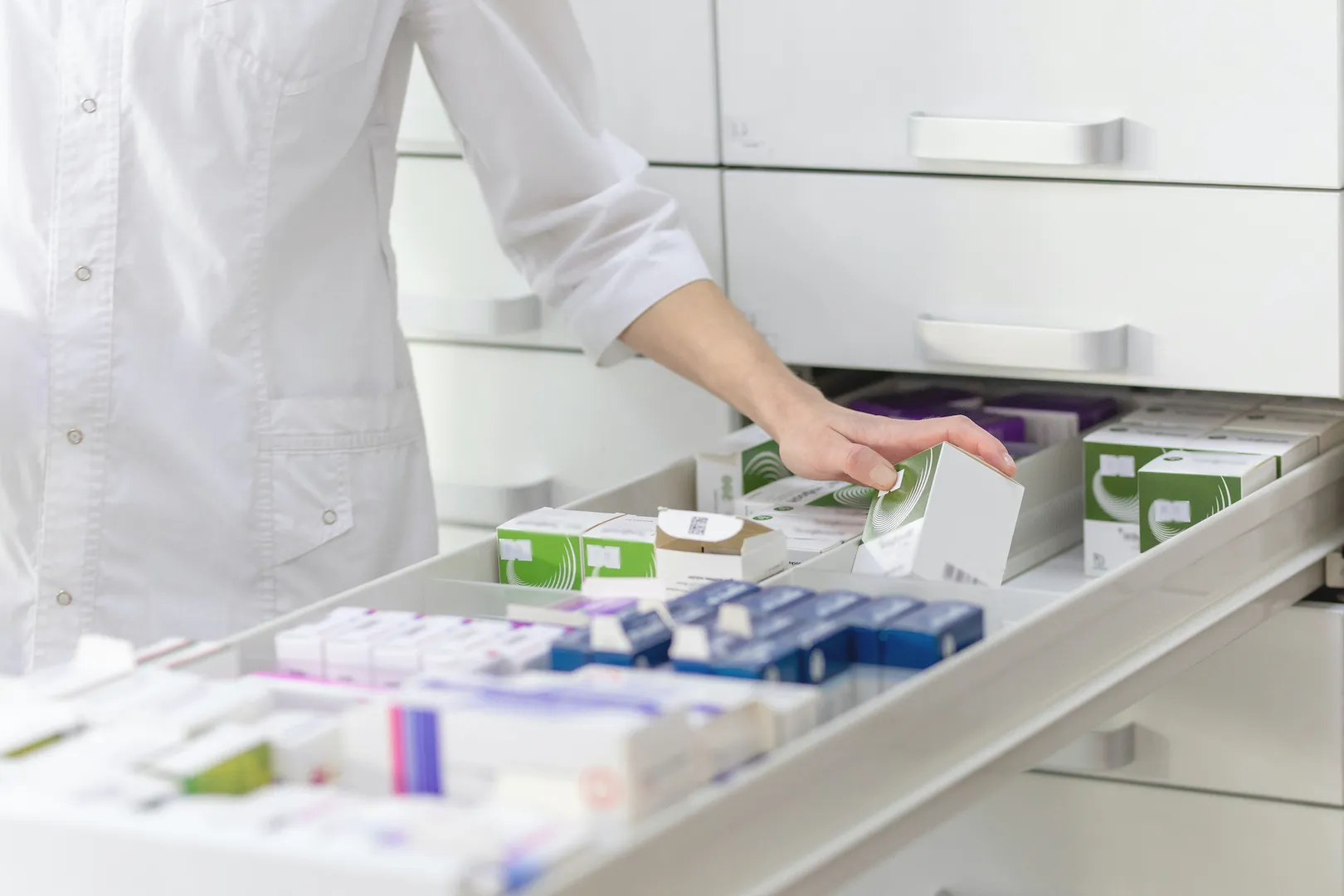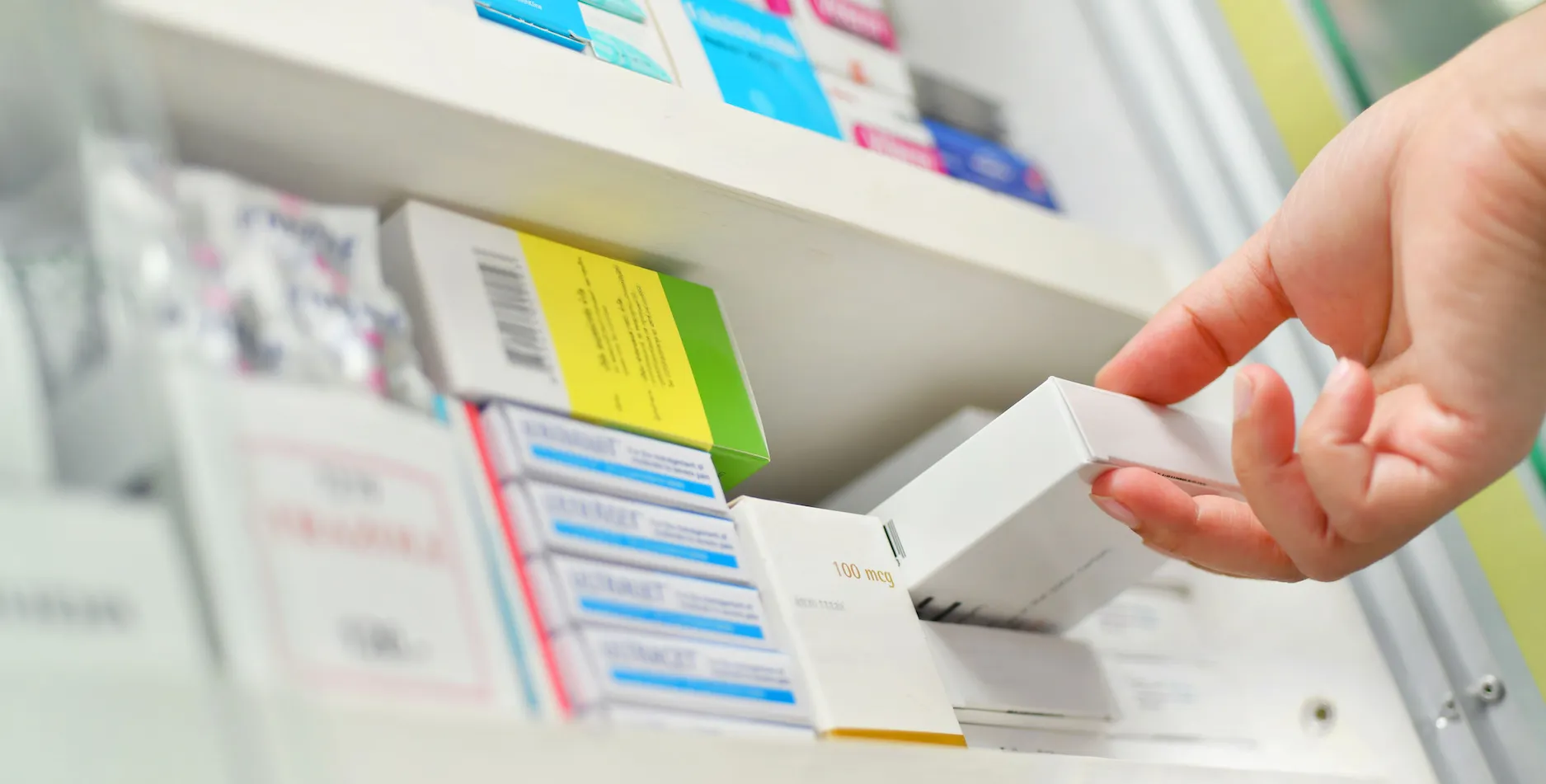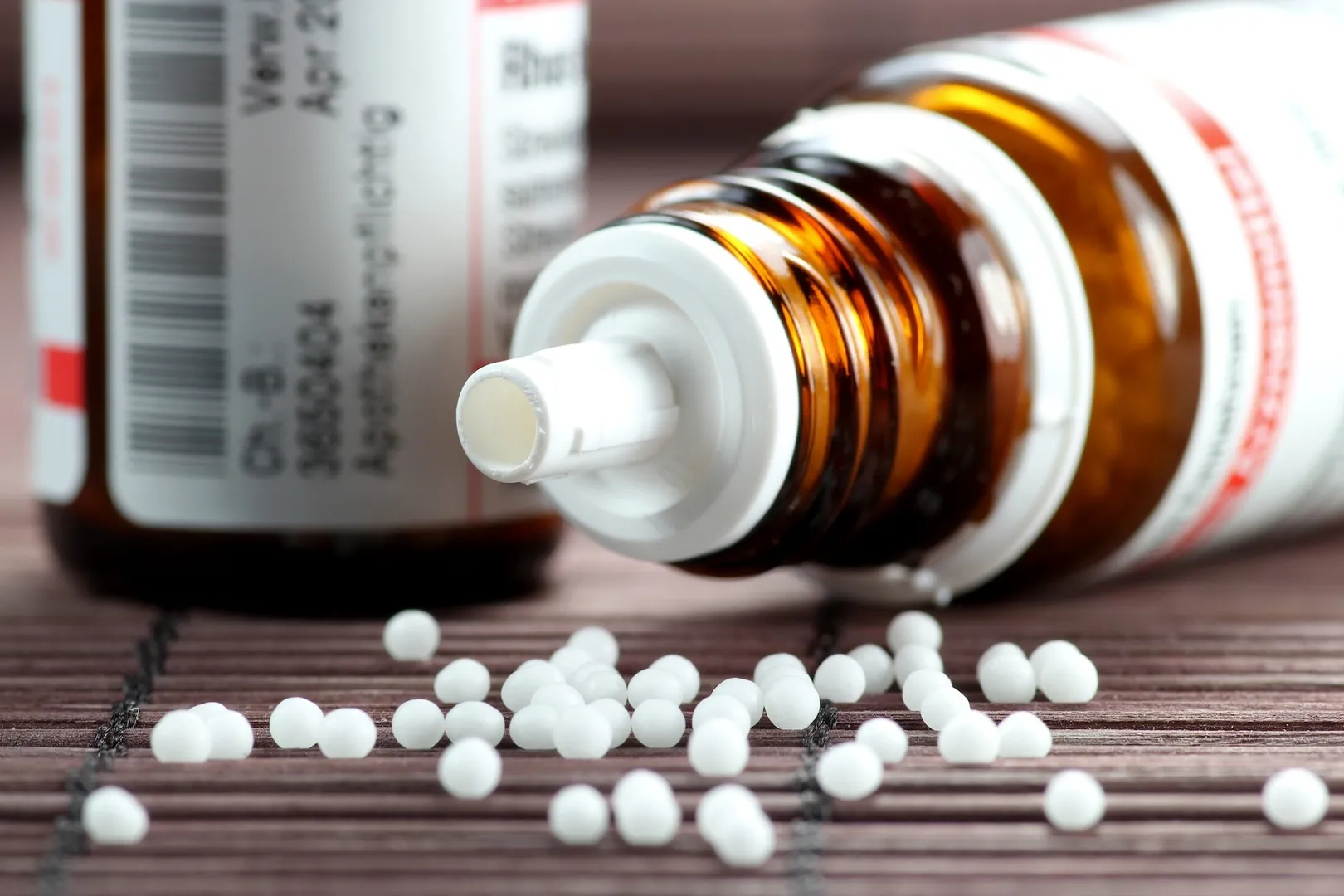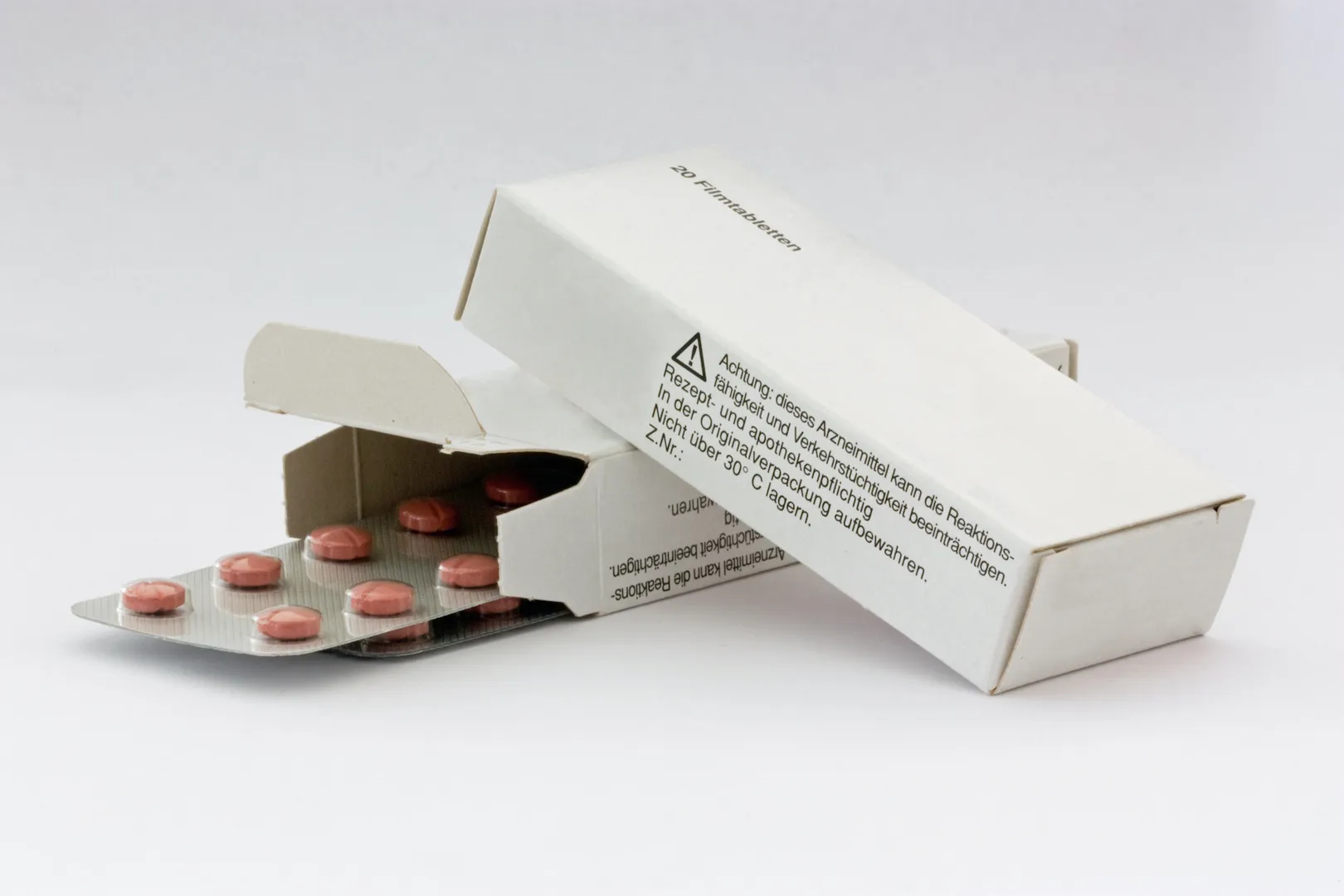
Labelling requirements for medicinal products: This information has to appear on the packaging
The labelling obligation for medicinal products is regulated in the Medicinal Products Act (AMG).
Medicinal products are only marketable if they are correctly labelled.
The labelling of medicinal product packaging may only be carried out by persons who hold a manufacturing authorisation in accordance with § 13 AMG.
All information must be correct, complete, legible and written in German for the German market.
The most important labels include references to the pharmaceutical entrepreneur, the name of the medicinal product, the active ingredients contained and the strength of the medicinal product.

Incorrect or missing labelling of medicines can, in the worst case, have serious consequences for consumers. The labelling obligation for medicines is therefore enormously important. Violations can also result in fines and legal consequences.
More safety thanks to the labelling of medicine packaging
Even small deviations from the recommended dosage can make a noticeable difference to health. This makes it all the more important to have drug labelling that provides clarity at first glance. In practice, this is achieved when the labelling on the medicine packaging
- is correct and complete,
- neither misleads nor causes confusion, and
the presentation does not allow confusion with other medicinal products
In order to ensure the safe use of medicinal products by consumers, the way in which the labelling is presented is therefore also important. Particularly problematic are for example finished medicinal products. These include both generally applicable labels that affect all medicinal products and medicinal product packaging, as well as various regulations for specific types of medicinal products.
Labelling of medicinal products according to the German Medicines Act (AMG)

Section 10, paragraph 1 of the German Medicines Act contains the specific labelling requirements for finished medicinal products.These include both generally applicable labelling that applies to all medicinal products and medicinal product packaging, as well as various regulations for specific types of medicinal products.
The labelling of medicinal product packaging may only be carried out by persons who hold a manufacturing authorisation according to § 13 AMG. In the case of incorrect labelling, the pharmaceutical entrepreneur is therefore liable.
General principles
German language: This also applies to medicinal products obtained from foreign-language countries. In the case of multilingual labelling, the information in the different languages must correspond.
Generally understandable: All information must be written in a way that is customary in German-speaking countries e.g if an active ingredient is usually known by its Latin name, this must be given instead of the German name.
Easy to read: People with average reading ability must be able to read the label easily. A rule of thumb is a font size of 7 pt.
On the outside of the packaging: Customers must already be able to perceive the labelling before purchase. A label inside the medicine packaging or a QR code alone is therefore not sufficient.
Durable labelling: In order to comply with the requirements of the AMG, the information should not be removable from the packaging without damaging it. In addition, the labelling must not be too easily rendered unrecognisable by the effects of external influences, for example fading or smearing.
Consistent with the summary of product characteristics: All the information given on the packaging must also correspond to the summary of product characteristics which pharmaceutical companies must make available to doctors, pharmacists and other healthcare professionals on request.

General labelling requirements
Extended description of the medicinal product: The so-called "extended description" of the medicinal product is composed of several elements which must be indicated on the packaging in the following order:
Drug name: This corresponds to the product name. This can be either a common name, a scientific name or an invented name.
Strength of the medicinal product: Depending on the pharmaceutical form, the strength of the medicinal product corresponds to the proportion of active substance per dosage unit, volume unit or weight unit. The information should always consist of a number and a unit of measurement. If there are two or more active ingredients, each strength must be indicated separately with its unit of measurement. Important: For strength information, the requirements of the current SmPC Guidelines and the QRD Recommendations on the expression of strength in name of centrally authorised human medicinal products must always be observed.
Dosage form: The dosage form (e.g. "film-coated tablets" or "capsules") has to be indicated according to the European standard designations, also called standard terms. If there is no corresponding standard designation, one has to be applied for at the European Directorate for the Quality of Medicines (EDQM).
- Details regarding the circle of users: The circle of users is named after the pharmaceutical form unless it is part of the product name. This information indicates whether a medicinal product is intended for infants, children or adults. Precision by age indication is permitted, provided that it is consistent with the authorised indication.
Authorisation number: The authorisation number can be used to check whether a preparation has been authorised as a medicinal product by the authorities. It must be indicated on the medicine packaging after the abbreviation "Zul.-Nr.".
Batch designation or date of manufacture: Medicinal products placed on the market in batches must be labelled with the abbreviation "Ch.-B." and the respective batch designation. In all other cases, the date of manufacture is to be indicated instead.
Quantity information on the contents: Depending on the pharmaceutical form of the medicinal product, more detailed information on weight (e.g. ointments), nominal volume (e.g. drops) or number of pieces (e.g. suppositories) must be provided on the medicinal product packaging.
Method of use: The labelling shall include information on the method of use and, where appropriate, the route of administration and shall be comprehensible to the consumer. The standard terms published by the Council of Europe should be used (e.g. "for oral use" or "for intravenous use").
Labelling of active substances: The types and quantities of active substances and other ingredients must always be stated on the packaging of medicinal products if this is prescribed by the higher federal authority or legal ordinance. The regulations vary depending on the medicinal product.
Expiry date: This provides consumers with information about the date up to which the medicine can be used safely and purposefully. The date should be given after the indication "use by" or its abbreviation "use by".
Kennzeichnungen für spezielle Arzneimittel
Genetically engineered medicinal products: name and active substance and of the genetically modified organism or cell line are mandatory.
Homoeopathic medicinal products: In addition to the usual compulsory labelling, further information must be added for homoeopathic medicinal products. These include a reference to its homoeopathic nature, information on registration and a note that medical advice should be sought if symptoms persist.
Prescription or pharmacy-only medicinal products: In the case of medicinal products that may only be dispensed on medical (including dental and veterinary) prescription, the indication "Prescription-only" must be noted on the packaging of the medicinal product. In the case of medicinal products that are only intended for distribution by pharmacies, the indication "Pharmacy-only" is necessary.

Non-prescription medicinal products: For medicinal products that do not require a prescription, the intended use must be noted on the medicine packaging.
Samples: Samples of medicinal products may only be dispensed to doctors, dentists and veterinarians or, if there is no prescription requirement, also to other persons who professionally practise dentistry and medicine.
Braille, warning and safety instructions
Braille: Labelling in Braille is mandatory for all medicinal products intended for use on humans and not exclusively used by persons in the health care professions. Another exception is medicinal products marketed in containers of no more than 20 millilitres or milligrams.
Tip: With medicine packaging from Labelprint24, you have the option of Braille finishing for all box types.
Inaccessibility for children: The notice to keep medicinal products inaccessible for children is mandatory on all medicinal products and drug packaging, with the exception of medicinal waters.
Information on precautionary measures: Where necessary, precautions for the disposal of unused medicinal products and measures to avoid hazards to the environment shall be indicated.
Storage instructions: Warnings on the correct storage of medicinal products must be given on the packaging if this is necessary due to the current state of scientific knowledge or if there are corresponding regulations on the part of the higher federal authorities or the legal system.
The labelling obligation for medicinal product packaging is not exclusively regulated by the Medicinal Products Act. Further labelling may be prescribed, for example, by the Narcotics Act (BtMG), the Good Clinical Practice Ordinance (GCP-V) and the Package Size Ordinance (PackungsV).
Only tamper-proof packaging is really safe
It is not only the correctness of the information on the packaging of medicines and medicinal products that is important. In addition, counterfeit medicines, for example, represent a considerable problem for the health sector. In order to be able to withdraw such products from circulation at an early stage, there are comprehensive and strict specifications for the counterfeit-proof design of medicine packaging.
According to the EU Anti-Counterfeiting Directive, the packaging of prescription medicines must be provided with the following two security features:
2D barcodes on pharmaceutical packaging: This is a data matrix code that contains the serial number, batch name, expiry date and an individual product code.
First-opening protection: First-opening protection is used to detect attempts to tamper with or counterfeit individual medicinal product packages. Often, the package opening is sealed with a seal (e.g. a security label) that is destroyed when the package is opened or leaves visible residues on the medicine package. The package flap can also be glued or a perforation line can be punched in for opening. The manufacturers are free to decide on this themselves.
This article only presents excerpts of the currently applicable regulations on the compulsory labelling of medicinal products. The complete provisions of the Medicinal Products Act and the EU Falsified Medicines Directive can be found in the list of sources.
Consequences of violations of the labelling obligation
A violation of the labelling obligation can lead to expensive consequences. On the one hand, there is the threat of fines of up to 25,000 euros. On the other hand, Section 10 of the Medicinal Products Act is a market conduct regulation. Therefore, violations can also be followed by competition law warnings, injunctions and claims for damages.
These articles might also interest you:

Customised packaging
These are individually manufactured packages such as folding boxes, shipping cartons or laminate tubes. Thanks to the individual adaptation to the size, weight and nature of the packaged goods, space and money can be saved.

Digital print shop 4.0
The "Industry 4.0" strategy aims to merge the internet and new IT technologies with production technologies such as robotics and automation in order to reduce costs, save time and enable new, innovative products and services.

Creating the die-cutting contour correctly
To ensure smooth label printing, our pre-press team needs a die-cutting contour. Most of the time, this is already created directly by the customer, but it still happens from time to time that the die-cutting contour is missing.




